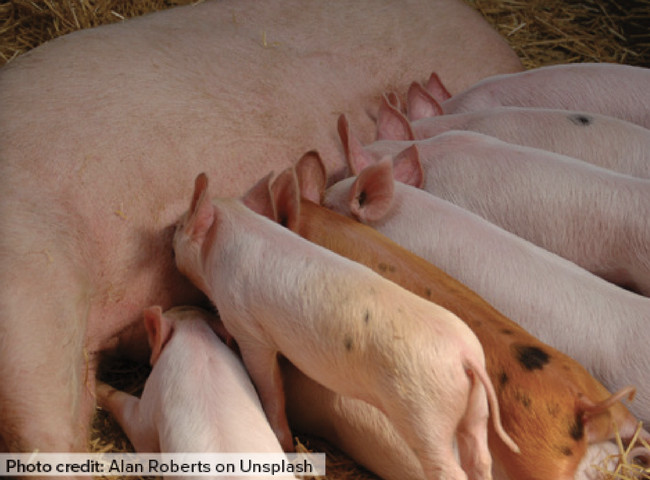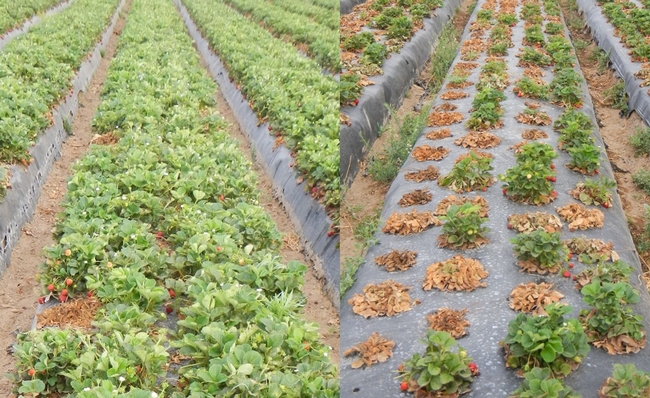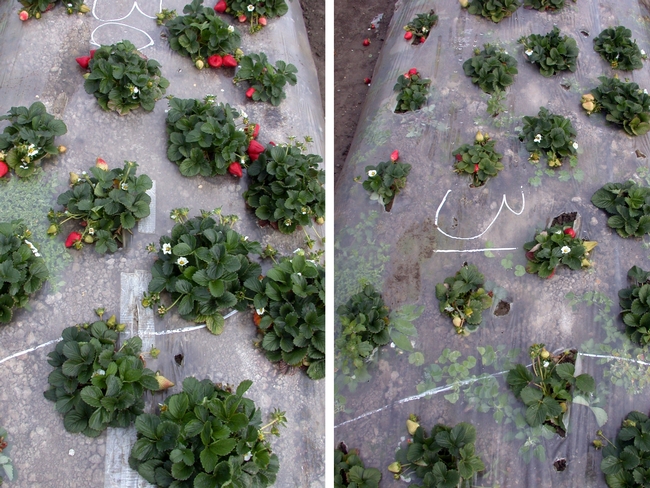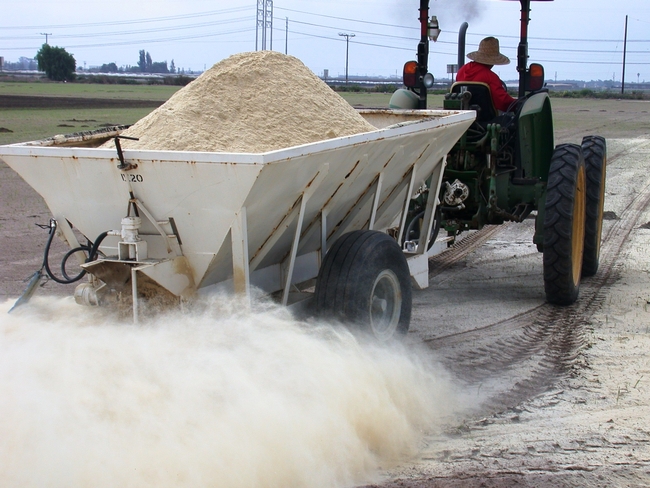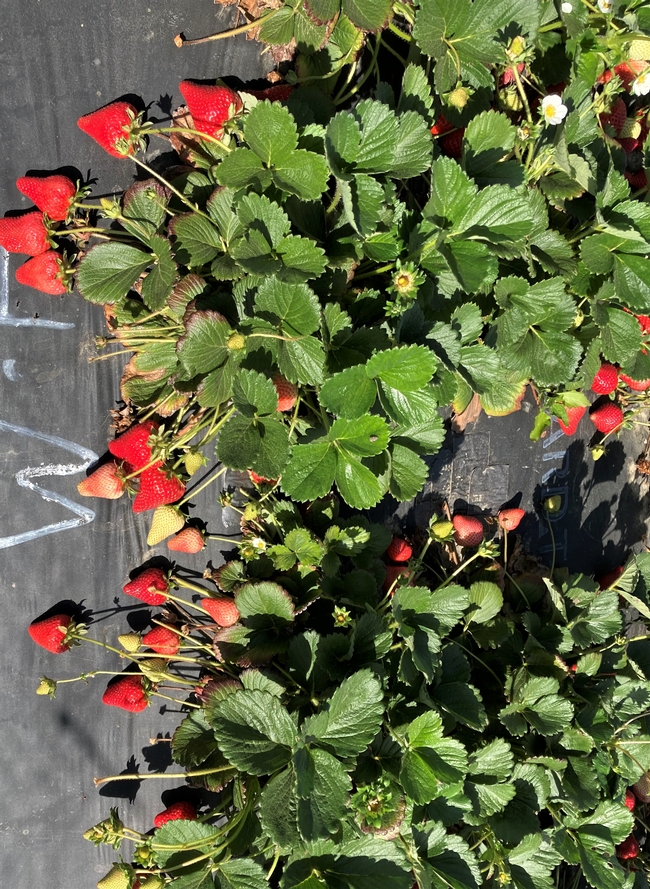UC Food and Agriculture Blogs
Pork prices may reflect uncertainty around Prop 12
California's farm animal welfare act, approved in 2018, fully implemented in January 2024 after delays
Since being passed by California voters in 2018, Proposition 12, a farm animal welfare law, has faced a series of legal challenges that have led to uncertainty and delays in the implementation and enforcement of its requirements for the treatment of breeding pigs. A new Special Issue of ARE Update sheds light on its contentious path to eventual full implementation on Jan. 1, 2024, and analyzes how these delays have affected the retail and wholesale pork market.
Preliminary data suggest that Prop 12, and the uncertainty surrounding it, have led to an average retail price increase of 20% for covered pork products (i.e., those included under the regulation, mainly uncooked cuts of pork), as well as significantly higher prices for wholesale pork products during the implementation period and as hog farms nationally continue to adjust to the law.
Prop 12, officially known as the “Prevention of Cruelty to Farm Animals Act,” was approved by 63% of California voters. The law requires housing standards for egg-laying hens, veal calves and breeding pigs for the eggs or meat of these animals or their offspring to be sold in California.
While these standards first went into effect for egg-laying hens and veal calves as early as Jan. 1, 2020, many farms and businesses were hesitant to make large investments in the sow housing and traceability requirements until legal issues were settled for Prop 12-compliant pork.
On May 11, 2023, the U.S. Supreme Court upheld Prop 12. As a result, and consistent with rulings of the Sacramento Superior Court in California, California began requiring Prop 12-compliant pork on July 1, 2023, while allowing remaining non-compliant pork already in the supply chain to be sold until Jan. 1, 2024. Although full enforcement began almost eight months after the Supreme Court ruling, hog farms, almost all of which are outside California, continue to expand the supply of pork from hogs born of mother pigs that meet California housing and treatment standards.
“A long complicated process is not uncommon for major regulations,” said Daniel A. Sumner, a study co-author and distinguished professor in the UC Davis Department of Agricultural and Resource Economics.
Economists Hannah Hawkins, Shawn Arita and Seth Meyer with the U.S. Department of Agriculture's Office of the Chief Economist have been documenting prices and quantities of hogs and pork as the industry has adjusted to Prop 12. Using Circana retail scanner data, they found that in the past nine months covered pork products sold in California increased in price compared to the rest of the United States. While there was significant price fluctuation between the partial and full implementation dates, the initial price impacts were higher than would be expected after full adjustment, with price increases of 16% for bacon and 41% for pork loin.
Based on USDA Agricultural Marketing Service data, the authors found that wholesale prices for compliant pork cuts also increased substantially during the adjustment period, with an average price premium of 22%. Due to the many delays in implementation, Prop 12-compliant pork volumes are not yet sufficient to meet quantities that would have been demanded without these significant price increases. As the industry catches up to supply sufficient quantities of compliant pork meat to meet the California demand and a new market equilibrium is reached, both retail and wholesale prices may settle at lower price premiums. However, we may still be several months away from understanding the full impact of Prop 12 on meat and egg producers and consumers.
To learn more about the implementation of Prop 12 and its impact on the retail and wholesale pork market, read the full Special Issue of ARE Update 27(3), UC Giannini Foundation of Agricultural Economics, online at https://giannini.ucop.edu/filer/file/1710543749/20936/.
ARE Update is a bimonthly magazine published by the Giannini Foundation of Agricultural Economics to educate policymakers and agribusiness professionals about new research or analysis of important topics in agricultural and resource economics. Articles are written by Giannini Foundation members, including University of California faculty and Cooperative Extension specialists in agricultural and resource economics, and university graduate students. Learn more about the Giannini Foundation and its publications at https://giannini.ucop.edu/.
Managing Pocket Gopghers
Pocket gophers can cause significant damage to valuable turf, girdle trees, and chew irrigation lines. Their mounds can create tripping hazards and lead to erosion concerns when found on slopes. Luckily there are multiple successful management options to...
Easter Egg Hunt 2024!
It's time for UC IPM's annual insect Easter egg hunt! Can you guess which insects laid the eggs pictured below? Some may be pests, while others may be beneficial. Leave a comment on this blog post with your guesses, or on our Facebook and Instagram...
Organic strawberry yields boosted by technique refined through UCCE research
Anaerobic soil disinfestation helps suppress weeds, disease without fumigants
Troubled by puny plants, low yields and persistent mite problems, third-generation Southern California strawberry grower Glen Hasegawa was ready to give up on his transition from conventional to organic 12 years ago.
“I've always liked a challenge – but it turned out to be more of a challenge than I thought it would be!” he said.
But then, with the help of scientists including Oleg Daugovish, UC Cooperative Extension strawberry and vegetable crop advisor in Ventura County, Hasegawa tried a technique called anaerobic soil disinfestation (ASD). When applied correctly, the multi-step ASD process creates a soil environment that suppresses pathogens and weeds and makes for healthier, more robust crop growth.
“Back in the day, it was really hard to get the plant growing vigorously in organic,” said Hasegawa, owner of Faria Farms in Oxnard. “So we started using the ASD and then you could definitely see that the plant had more vigor and you could grow a bigger, better plant using it.”
Seeing that he could produce yields “in the neighborhood” of those grown in conventional strawberry fields fumigated with synthetic fumigants, Hasegawa was able to expand his original 10 acres of organic strawberries to 50 acres.
“I guess you could say I'm kind of a convert,” he said, noting that he now applies ASD to all his acreage each year in late spring.
Joji Muramoto, UC Cooperative Extension specialist in organic production based at UC Santa Cruz, has been experimenting with ASD since it was first brought to the U.S. from the Netherlands and Japan in the early 2000s. Carol Shennan, a professor in the Department of Environmental Studies at UCSC, and Muramoto were among the first to try the technique in California. They found that ASD successfully controlled an outbreak of Verticillium wilt – caused by the pathogen Verticillium dahliae – at UCSC's small organic farm in 2002.
Since then, Shennan, Muramoto, Daugovish and their colleagues have seen encouraging results at 10 trial sites across the state.
“We demonstrated that ASD can provide comparable yields with fumigants, in side-by-side replicated trials,” Muramoto said.
ASD promotes host of beneficial changes to soil ecosystem
ASD comprises three basic steps: incorporating a carbon source that is easily digestible by microbes in the soil (traditionally, rice bran has been used), further encouraging fermentation by covering the soil with plastic to limit oxygen supply, and finally adding water through drip irrigation to initiate the “anaerobic” decomposition of the carbon source and maintain the three-week “cooking” process.
The resulting cascade of chemical, microbiological and physical changes to the soil creates an ecosystem that is both conducive to strawberry growth – and inhospitable to pathogens and weeds.
“It's not like a pesticide where you have a mode of action, and thus resulting in ‘A' and ‘B' for you,” Daugovish explained. “There's a sort of cocktail of events that happens in the soil; they all happen interconnectedly.”
Compared to similar fields that did not undergo the process, ASD-applied organic strawberry fields across California have seen yields increase by 60% to 70% – and even doubling in some cases, according to Daugovish.
The UCCE advisor also shared the story of a longtime grower in Ventura County, who came to him with fields in “miserable” condition; they were plagued by one of the world's worst weeds, yellow nutsedge, and infected with charcoal rot, a disease caused by the fungus Macrophomina phaseolina. But after applying rice bran and following the ASD recipe, the grower saw phenomenal results.
“The only complaint he said to me was, ‘Now I have too many berries – we have to have more pickers to pick the berries!'” Daugovish recalled.
Via researchers' meetings, online resources, on-farm demonstration trials and word of mouth from peers, use of ASD by California strawberry growers has grown significantly during the past two decades. Tracking the purchase of rice bran, Muramoto estimated that about 2,500 acres were treated by the ASD-related practices in 2023 – covering roughly half of the 5,200 total acres of organic strawberries in California.
Muramoto directly links the growth of California organic strawberry production – which now comprises about 13% of total strawberry acreage in the state – with the increasing adoption of ASD.
“If you remove the acreage with the applied rice bran over the last 10 years or so, organic strawberry acreage is just flat,” he said.
Within the last decade, acreage of organic strawberries with ASD-related practices increased by 1,640 acres, which is a boon for air quality, human health and long-term soil vitality. According to Muramoto's calculations, that increase in organic acreage translates to a reduction of about 465,000 pounds of fumigant active ingredients that would have been used in growing conventional strawberries.
“There are hundreds of reports of acute illnesses related to fumigation in the record, so it's very important to find alternatives to fumigants,” said Muramoto, citing California Department of Pesticide Regulation documents.
Research continues to make ASD more economical, effective
The popularity of ASD has come at a price, however, for organic strawberry growers.
“There's more organic out there, and I think most of the organic guys are using it, so there's more demand on the rice bran; the price has been steadily going up every year, like everything else,” said Hasegawa, adding that he has been trying to decrease the amount of carbon while maintaining ASD's efficacy.
On top of greater demand from other growers and from beef cattle and dairy producers (who use rice bran as feed), the price also has increased due to higher costs in transporting the material across the state from the Sacramento Valley. So Daugovish and his colleagues – including Peter Henry, a U.S. Department of Agriculture plant pathologist – have been searching for a cheaper alternative.
“We all want an inexpensive, locally available, reliable, easy to use and functional carbon source, which sounds like a big wish list,” Daugovish said.
Carbon sources such as bark, wood chips, or compost are ineffective, as the crucial ASD microorganisms are choosy about their food.
“Microbes are just like cows; you can't feed them straight wood; they get pretty angry,” Daugovish explained. “And if you feed them something with too much nitrogen, they can't digest it – they get the runs. Microbes are the same way – you have to have the right proportion of stuff so they feel comfortable doing what they're doing.”
In search of an ideal replacement, researchers tried and ruled out grass clippings, onion waste, glycerin and coffee grounds. Finally, they pivoted to a material with properties very similar to rice bran: wheat bran, in the form of wheat middlings (also called midds, a byproduct of flour milling) and dried distillers' grain (DDG, a byproduct of ethanol extraction).
After field experiments in Santa Paula, the UC and USDA researchers found that midds and DDG were just as effective at controlling soilborne pathogens and weeds as rice brain – but at 25% to 30% less cost. Their results were published last year in the journal Agronomy.
“Not surprisingly, the wheat bran has worked almost exactly the same as rice bran,” Daugovish said.
He and Muramoto are now conducting trials with wheat bran at commercial fields, and the initial results are promising. Daugovish said the grower at one site in Ventura County has seen a 90% reduction in Macrophomina phaseolina, the causal pathogen of charcoal rot, in the soil – and an 80% to 90% drop in yellow nutsedge germination. They are waiting for final yield numbers after the coming summer.
While ASD has been beneficial to organic productivity and soil health, both Daugovish and Muramoto acknowledged specific limitations in suppressing the “big three” strawberry diseases: Verticillium wilt, Fusarium wilt and charcoal rot. In coastal areas with cooler soil temperatures, for example, ASD can actually exacerbate the latter two diseases, as the fungal pathogens feed on the rice bran.
“We know it works at warmer temperatures, but, practically, it's hard to do in coastal California,” Muramoto said. “It would be nice if we can find a way to suppress Fusarium wilt at a lower temperature, but we don't have it right now.”
That's why researchers emphasize that ASD is not a “silver bullet.” It's just one tool in the organic toolbox, which includes careful crop rotation, disease-resistant strawberry varieties and better diagnostic tests that help growers pinpoint outbreaks and make the application of various methods more targeted and more efficient.
And scientists will continue to optimize ASD to make it more effective and economical for growers in the different strawberry regions of California – from the Central Coast to the Oxnard Plain.
“We know it can work really well; it's just finding the most sustainable way to do this in our region,” Daugovish said. “We've got to just have an open mind and keep trying.”
Peach Leaf Curl Control Period
Spring is just around the corner and many types of fruit trees are starting to develop their leaves. If you are growing peaches or nectarines and are now seeing symptoms of peach leaf curl on new leaves, unfortunately it's too late to manage the...



